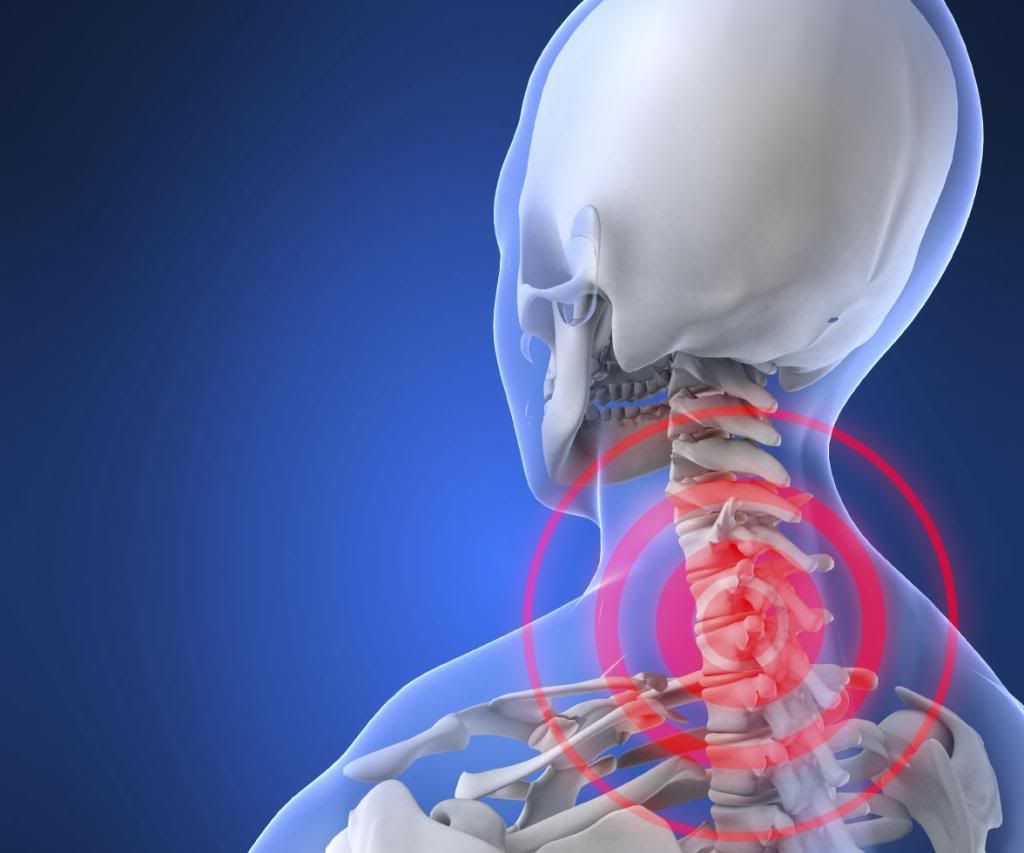What’s Causing my Neck Pain?

To find ultimate neck pain relief, you have to understand what forces are making your neck painful. Once you understand what is causing your neck pain, you can then learn how to remove the forces that contribute to this neck pain. The #1 force that contributes to neck problems is gravity and changes in load. The neck has 16 small muscles, joints, and bones that must work together to balance and support 10-13 pounds of skull, brain, and blood. Any injury that changes how these muscle, bones, and joints work will contribute to head and neck dysfunction and possibly headaches and neck pain. These injuries may include muscle strain, ligament/joint strains, nerve compression, muscle imbalances and postural changes.
Common Causes of Neck Pain
Muscle Strains: More commonly known as pulled muscles, involves tearing of the muscle fibers as a result of over stretching. This can occur during quick whiplash type events such as motor vehicle accidents or falls. Additionally, and possible less understood is that these injuries can also occur over time with repetitive and/or overuse of the neck muscles. We see this when we find ourselves in one position for a very long time i.e. sitting at the computer or tablet/smartphone with the head looking down and shifted forward. This effectively over shortens the muscles on the front of the neck which sends a signal to the muscles on the back of the neck to relax and weaken. Next, something startles you or you just quickly lift your head up and BOM the back of you neck hurts. Other prolonged positions that can contribute to this type of injury include reading in bed or on a couch and also sleeping on your back or side with a pillow that does not properly support your head and maintain neck alignment. But I’ve always done these things, why am I just now having these issues?

Worn Joints: Wear and tear on our joints is a fact of life and just like your shoulders or knees, the neck joints will experience wear and tear with time possibly leading to osteoarthritis. Here the key is to slow this process as much as possible and maintaining proper posture and muscle balances around the neck help combat this issue.
Nerve Compression: Located within the neck bones lies the spinal cord, which is responsible for getting brain signals to the body and receiving feedback from the body and getting that info back to the brain. (over simplified here, if you want more details on this I can ask my wife the NeuroScientist to write a post. Let me know if that is info you would like.) However, if the space where the nerves enter/exit the spinal column narrows this can cause compression on the nerve. Symptoms may include tingling, numbness, or pain. If you experience these symptoms evaluation by a physician or physical therapist is indicated as some types of muscle tightness/injuries can also cause tingling, numbness, and pain. Contributing factors to nerve compression include possible herniated discs where the disc has weakened and deformed, arthritis or bony changes where new bone has formed, or muscles around the spinal segment have spasmed causing the joint space to narrow. All these factors can lead to an actual direct compression on the nerve. Additionally, all three of these factors are treated differently and a through evaluation is required before treatment should be started.
Home Remedies for Easing Neck Pain
Take a Break – Posture breaks are the simplest ways to relieve neck strain. We recommend that you do these at least every 30 minutes if your job requires prolonged sitting or computer use. You can also take a complete break and actually lie down flat without any pillows under the head. Posture breaks are completed by pausing any computer work you are doing and make an effort to sit up straight and with the head slightly pulled back you squeeze the shoulder blades together for 5 reps. Once completed, then you do repeated chin tucks for 5 reps. If you have difficulty with the head/neck position you can stand up against a wall. Place your bottom, shoulders, and back of head against the wall and then repeat the shoulder blade movements. If you have difficulty getting your head to the wall you need to schedule an appointment to have your posture assessed and then get a program designed specifically for you.
Relax – Increased stress levels can cause an increase in muscle tension around the shoulders and neck. This can also lead to changes in breathing patterns that further contribute to neck muscle strain.
- Progressive Relaxation – Sit or lie down and close your eyes in a quiet location. Then, consciously tighten the muscles of the head and neck and hold for 2 seconds and then completely release. Continue down the entire body for 8 to 10 reps.
- Abdominal Breathing – Sit or lie down and take in a slow, deep breath initiating with your abdomen. Inhale for approximately 4 seconds, hold for 3 seconds and then exhale completely for 8 seconds, gently sucking in the stomach. Complete for several minutes using caution not to complete too quickly as to cause you to hyperventilate.
Call today for more information or to schedule an appointment, (281) 402-1208.
 Valeo Physical Therapy
1235 Clear Lake City Blvd, Ste F.
Houston, TX 77062
(281) 402-1208
http://www.ValeoPT.com
Valeo Physical Therapy
1235 Clear Lake City Blvd, Ste F.
Houston, TX 77062
(281) 402-1208
http://www.ValeoPT.com

